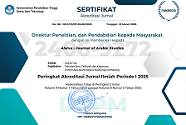Pengembangan Handout CEKAP sebagai Bahan Ajar Bahasa Arab untuk Siswa Kelas VI Madrasah Ibtidaiyah
DOI:
https://doi.org/10.21580/alsina.4.2.10214Keywords:
Arabic materials, Arabic teaching and learning, handout, Research and DevelopmentAbstract
This study aims to develop Arabic teaching materials with handouts for Madrasah Ibtidaiyah students by conducting a needs analysis and validation/feasibility test of Arabic teaching materials with expert judgment. The development of this handout teaching material aims to make it easier to understand the Madrasah Final Examination (UAM) material. Data collection techniques using observation, questionnaires, interviews, and documentation. The research and development procedure was carried out following the stages proposed by Thiagarajan. The results showed that the CEKAP Handout (Quick Capture UAMBN) teaching materials that were developed were relevant to the needs of students in facing UAM. The development of Arabic teaching materials that were compiled based on the results of planning and design development with the themes of At-Ta'rīf bi-al-Nafs, Al-Adawāt al-Madrasīyah, Aṣḥāb al-Mihnah, Al-ʿUnwān, Afrād al-Usrah, Al -Alwan. The CEKAP handout is 20 pages long. From the results of the validation, this teaching material proved to be valid, the results of the validation of design experts were 84% and the validation of material experts was 82%. The results of the class VI MIN 2 Pati trial showed 86%. From the results of data analysis through the t-test formula produces Tscore (3.175) ≥ Ttable (1.703) so that there are differences before and after students use handout teaching materials.
Downloads
References
Al-Nāqah, Maḥmūd Kāmil. “Usus I’dād Mawād Taʿlīm Al-Lughah Al-ʿArabīyah Wa-Ta’līfihā.” Startimes, 2007. https://www.startimes.com/f.aspx?t=3829495.
Bouckaert, Marina. “Current Perspectives on Teachers as Materials Developers: Why, What, and How?” RELC Journal 50, no. 3 (2019): 439–56. https://doi.org/10.1177/0033688218810549.
Darnita, I Kadek, A A I Ngurah Marhaeni, and Made Candiasa. “Pengaruh Penggunaan Bahan Ajar Online Terhadap Prestasi Belajar TIKOM Dengan Kovariabel Aktivitas Belajar Siswa Kelas VIII SMP Dwijendra Gianyar.” Jurnal Pendidikan Dasar Ganesha 4, no. 1 (2014). https://www.neliti.com/publications/123459/.
Farani, Yasmin, and Maria Dwi Winarni. “A Sustainable Role: Teacher as a Material Developer.” In Proceeding of the 65th TEFLIN International Conference, 65:89–93. Makassar: Universitas Negeri Makassar, 2018. https://ojs.unm.ac.id/teflin65/article/view/6254.
Harjanto. Perencanaan Pengajaran. 7th ed. Jakarta: Rineka Cipta, 2010.
Kosasih, E. Pengembangan Bahan Ajar. Jakarta: Bumi Aksara, 2020.
Loon, Mariëtte H. van, Natalie S. Bayard, Martina Steiner, and Claudia M. Roebers. “Connecting Teachers’ Classroom Instructions with Children’s Metacognition and Learning in Elementary School.” Metacognition and Learning 16, no. 3 (2021): 623–50. https://doi.org/10.1007/s11409-020-09248-2.
Majid, Abdul. Perencanaan Pembelajaran: Mengembangkan Standar Kompetensi Guru. Bandung: PT Remaja Rosdakarya, 2009.
Nana. Pengembangan Bahan Ajar. Klaten: Penerbit Lakeisha, 2020.
Nasruddin, Muhammad Arif. “Pengembangan Handout Mata Pelajaran Bahasa Arab Berbasis Cerita Pendek Tematik Untuk Melatih Kemampuan Berpikir Kritis Siswa.” Cordova Journal : Languages and Culture Studies 10, no. 2 (2020): 170–84. https://doi.org/10.20414/CORDOVA.V10I2.2899.
Panggabean, Nurul Huda, and Amir Danis. Desain Pengembangan Bahan Ajar Berbasis Sains. Medan: Yayasan Kita Menulis, 2020.
Pemerintah RI. Undang-undang Republik Indonesia Nomor 14 Tahun 2005 tentang Guru dan Dosen (2005).
Purwanto, Kelik. “Pengembangan Handout Untuk Siswa Kelas V SD N 14 Koto Baru Pada Materi Bermain Drama.” JURNAL TARBIYAH 24, no. 1 (2017): 137–56. https://doi.org/10.30829/TAR.V24I1.156.
Sadjati, Ida Malati. “Pengembangan Bahan Ajar.” In Hakikat Bahan Ajar. Jakarta: Universitas Terbuka, 2012.
Sanah, Siti, and M Abdul Hamid. “Namûdzaj Tathwîr Mawâd Ta’lîm Al-Lughah Al-‘Arabiyah Fî Dhau Al-Takâmuli Baina Al-‘Ilmi Wa Al-Wahyi.” Arabiyat : Jurnal Pendidikan Bahasa Arab Dan Kebahasaaraban 7, no. 2 (2020): 264–85. https://doi.org/10.15408/a.v7i2.16681.
Setiadi, Syamsi. “Development of Instructional Design Arabic-Indonesian Translation Based on Collaborative Learning.” Arabiyat : Jurnal Pendidikan Bahasa Arab Dan Kebahasaaraban 6, no. 2 (2019): 238–53. https://doi.org/10.15408/a.v6i2.12311.
Syaifullah, Muhammad, and Nailul Izzah. “Kajian Teoritis Pengembangan Bahan Ajar Bahasa Arab.” Arabiyatuna : Jurnal Bahasa Arab 3, no. 1 (2019): 127. https://doi.org/10.29240/jba.v3i1.764.
Tajuddin, Shafruddin, Muhammad Kamal, and Zuryati Zuryati. “Arabic Material Development Design for Senior High School.” Arabiyat : Jurnal Pendidikan Bahasa Arab Dan Kebahasaaraban 6, no. 1 (2019): 93–107. https://doi.org/10.15408/a.v6i1.10949.
Thiagarajan, Sivasailam, Dorothy S. Semmel, and Melvyn I. Semmel. Instructional Development for Training Teachers of Exceptional Children: A Sourcebook. Bloomington, Indiana: Center for Innovation in Teaching the Handicapped, Indiana University, 1974.
Ulusoy, Mustafa. “Pre-Service Teachers as Authors and Elementary School Students as Readers of Self-Published Picturebooks: A Formative Experiment.” Early Childhood Education Journal 47, no. 6 (2019): 751–67. https://doi.org/10.1007/s10643-019-00965-1.
Wahyuningsih, Dian, Sugeng Bayu Wahyono, and Ariyawan Agung Nugroho. “Teachers’ Difficulties in Developing Learning Resources.” In The 2nd International on Meaningful Education (2nd ICMEd), 6:665–679. KnE Social Sciences, 2021. https://doi.org/10.18502/kss.v6i2.10024.
Downloads
Published
How to Cite
Issue
Section
License
Copyright
The copyright of the received article shall be assigned to the publisher of the journal. The intended copyright includes the right to publish the article in various forms (including reprints). The journal maintains the publishing rights to published articles. Authors are allowed to use their articles for any legal purposes deemed necessary without written permission from the journal, but with an acknowledgment to this journal of initial publication.
Licensing
In order for Alsina: Journal of Arabic Studies to publish and distribute research articles, the editors need publishing rights (transferred from author to publisher). This agreement relates to the transfer/publishing copyright license to Alsina: Journal of Arabic Studies but the authors still have significant rights to use and share their published articles.
Alsina: Journal of Arabic Studies supports the need for writers to share, disseminate and maximize the impact of their research and their rights on any database. As a journal article writer, you have the right to various uses of your articles, including that by the institution or company where you work. Copyright can be used without the need for special permission. Authors who publish articles in the Alsina: Journal of Arabic Studies have broad rights to use their work for teaching and scientific purposes without requesting permission, including:
- Use by the author for lectures, presentations, or conferences, with distribution of copies to participants;
- Distribution to colleagues for research use;
- Use in compilations of the author's subsequent work;
- inclusion in a thesis or dissertation;
- Reuse of sections or excerpts from articles in other works (with full acknowledgment of the final article);
- Preparation of derivative works (other than commercial purposes) (with full acknowledgment of the final article);
- Voluntary posting on open websites operated by authors’ or writers' agencies for scientific purposes
When submitting a manuscript, authors do so on the understanding that if accepted for publication, the copyright for publishing (publishing right) of the article shall be assigned/transferred to Alsina: Journal of Arabic Studies.
Authors whose articles are accepted for publication will receive confirmation via email and sent a Copyright Transfer Agreement.


 Accreditation
Accreditation 
 In Collaboration with
In Collaboration with 

 Visitors
Visitors  Article Template
Article Template





